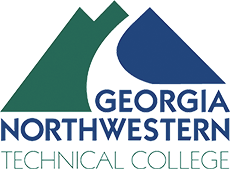Research Terminology
Unfamiliar terms may have popped up in English classes or while talking to a librarian about research. Here are some of those terms and definitions so that they can be better understood.
Bias - According to the New Oxford American Dictionary, 3rd. ed. bias is "prejudice in favor of or against one thing, person, or group compared with another, usually in a way considered to be unfair" (162). In terms of research: information intentionally or unintentionally favoring or criticizing one thing versus another, typically without fairly representing the other side.
Boolean - Boolean is a method of searching. It uses the words "or", "and", and "not" to help narrow or broaden searches.
Database / Electronic Resource - An online collection of information that is searchable and made accessible through paid or unpaid subscriptions.
Full Text - Full text means books or articles accessed online have the entire document available for immediate use. The formats are often either PDF or HTML.
Journal - An academic journal is similar to a magazine but it publishes articles written by people in academic fields, such as science, math, English, nursing, and others. It can include original research, research papers, conference proceedings and more. They are generally considered more reliable than popular magazines and newspapers.
Keywords - Keywords are words relating to a topic, subject, or idea. They can be the name of the topic, words relating to the definition, or words relating to the field of study.
Limiters - Limiters are ways to narrow the search. Options include "full text", and "peer reviewed", as well as date, format, language, and many others. The limiters will exclude any articles that do not meet the criteria selected.
Peer Reviewed - Peer reviewed articles are also known as scholarly articles and refereed articles. They are articles that are considered reliable and have been through a review process that includes sending the article to other experts in the field and receiving their approval or disapproval.
Periodical - A magazine, newspaper, or journal which is published at a regular interval.
Plagiarism - The New Oxford American Dictionary, 3rd ed. defines plagiarism as "the practice of taking someone else's work or ideas and passing them off as one's own" (1336). This may be accidental, but can still carry significant repercussions in an academic career.
Resource - In regards to doing research, a resource is an item of nearly any format (book, article, video, etc) which provides information on your topic. Resources are also known as sources (of information). The two words are interchangable..
Truncating - Truncating is the act of shortening a word and placing a symbol in the place of other letters to indicate that there can be additional letters. This allows the search engine to look for a word with multiple endings. Sometimes, truncation marks can replace a single letter within a word to accommodate different spellings.
